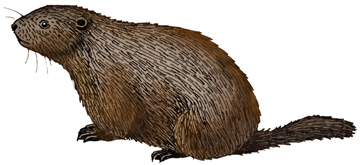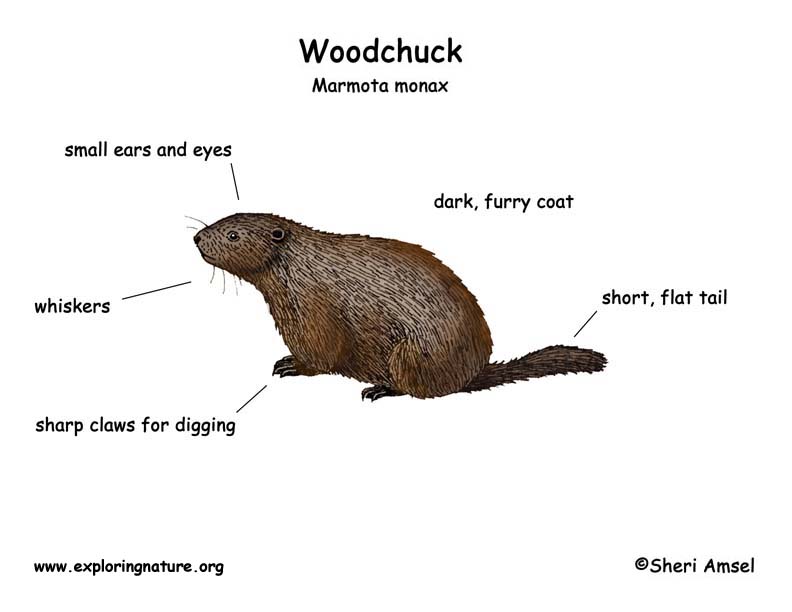Woodchuck

Range
Woodchucks (also called groundhogs) are found in southern Canada, Alaska, Northwestern and Northeastern United States west up to the prairie and south to Alabama.
Habitat
They live in burrows in fields, hedgerows and on the edge of forests. They have adapted to do well in farmlands and pastures as well.
Body Traits
The largest member of the squirrel family, they vary in weight from 6-12 pounds (males are larger). They can be yellow to brown with frosted hair tips and a rounded body, bushy tail and short, strong legs for digging. The woodchuck’s front teeth grow continuously throughout their lives.
Habits
They live life mostly on the ground and den underground. They build extensive burrows with many rooms and exits. They have separte rooms for food and sleeping and waste. They are active during the day (diurnal) in the summer and hibernate in the winter. They live alone, except when mating or raising young.
Diet
They eat mostly plants (herbivores), but sometimes eating insects, eggs and snails. Woodchucks make a range of noises including a high-pitched whistle, so are sometimes called "whistle-pigs." They are true hibernators, sleeping from October to March or April. They live alone except when mating or females with young.
Predators
Predators include foxes, coyotes, dogs and man.
Reproduction
Females are pregnant for 30 days (gestation) and have 2-7 young, usually in May.
Lifespan and/or Conservation Status
Woodchucks can live up to 6 years in the wild. They are listed as Lower Risk - least concern.

Classification
Kingdom: Animalia
Phylum: Chordata
Subphylum: Vertebrata
Class: Mammalia
Order: Rodentia
Suborder: Sciuromorpha
Family: Sciuridae
Subfamily: Xerinae
Genus: Marmota
Species: Marmota monax
No comments:
Post a Comment